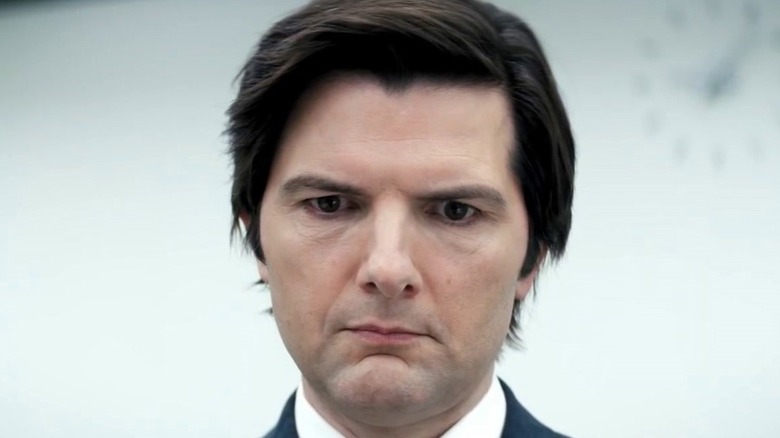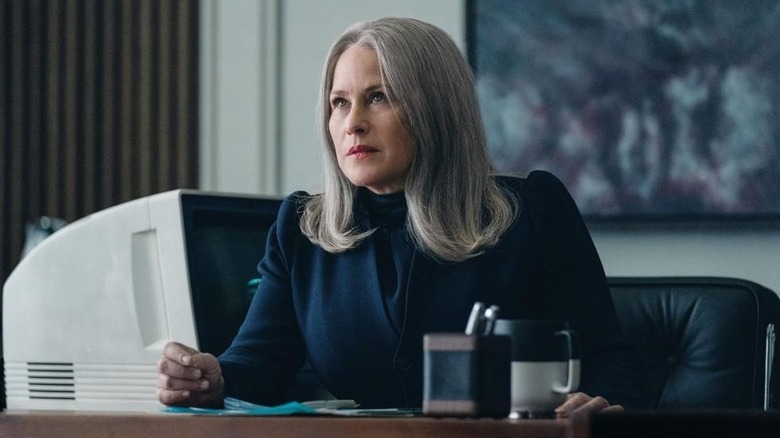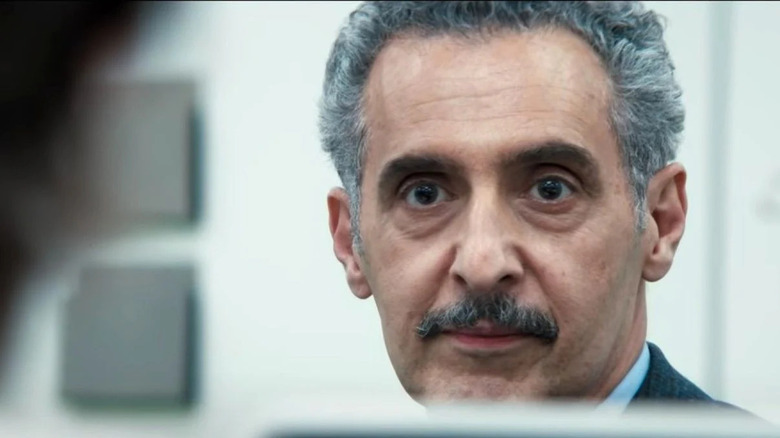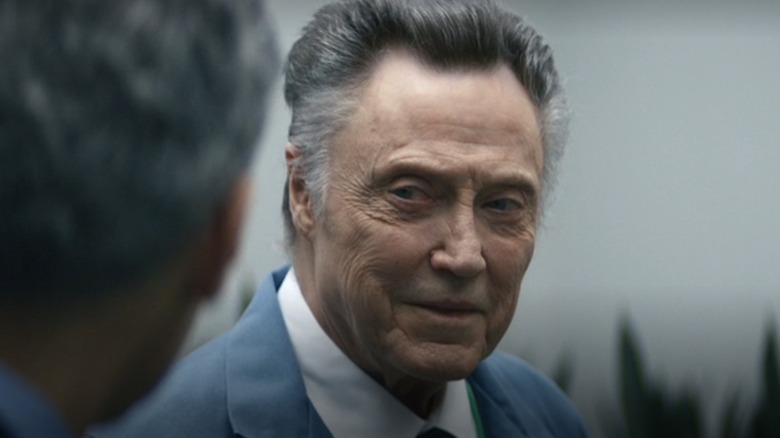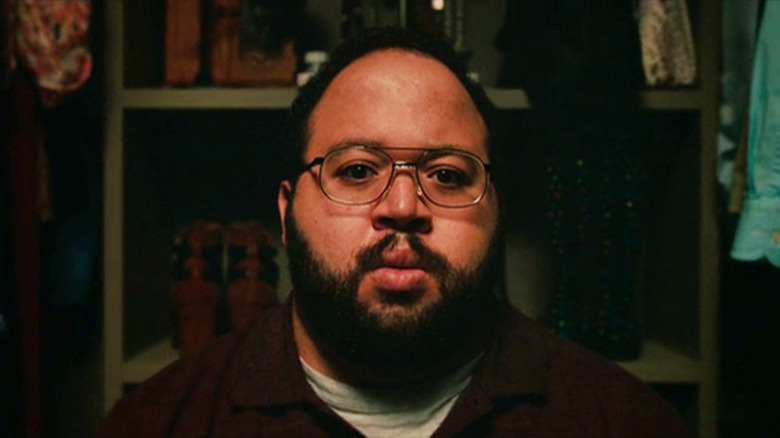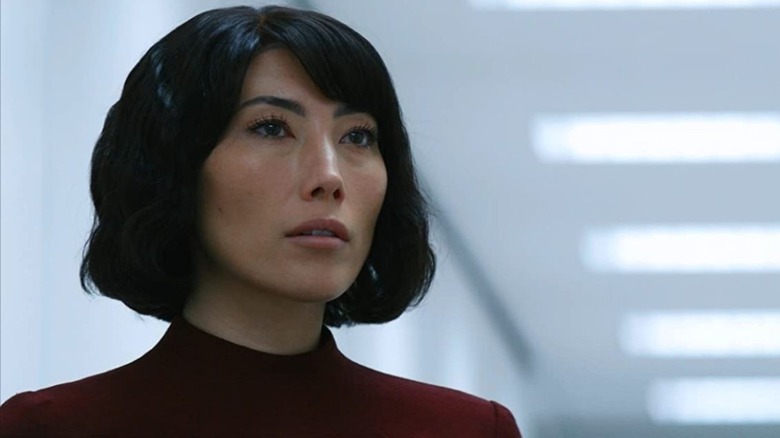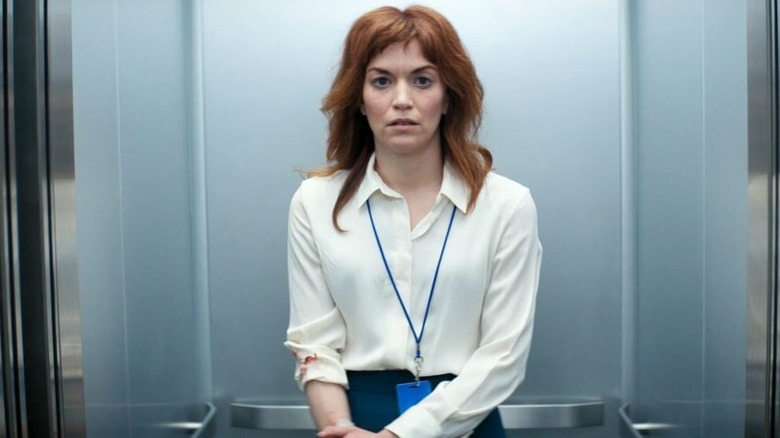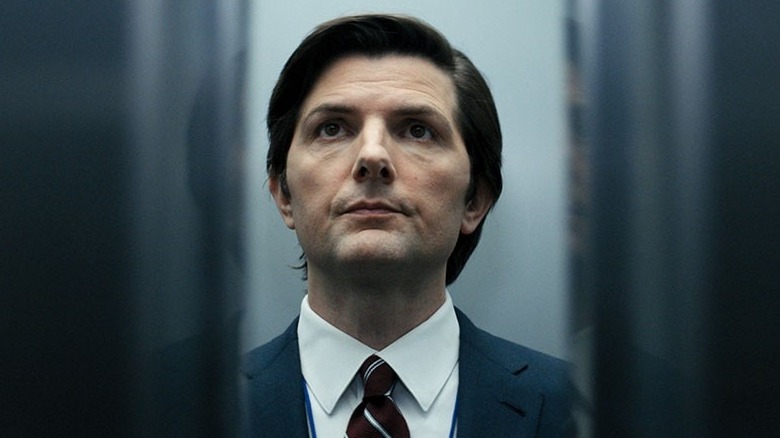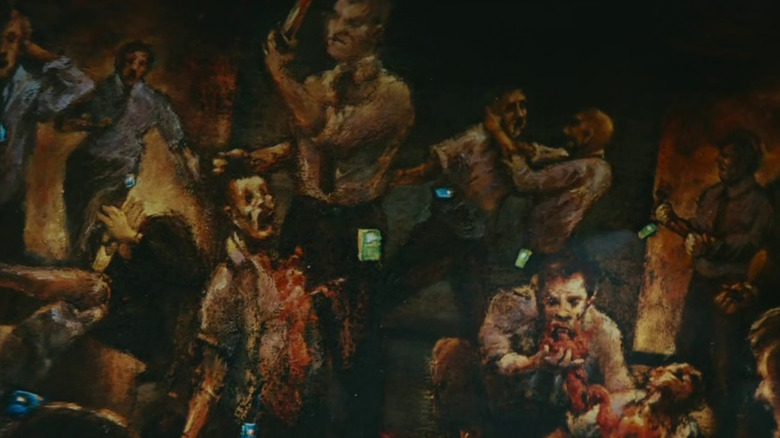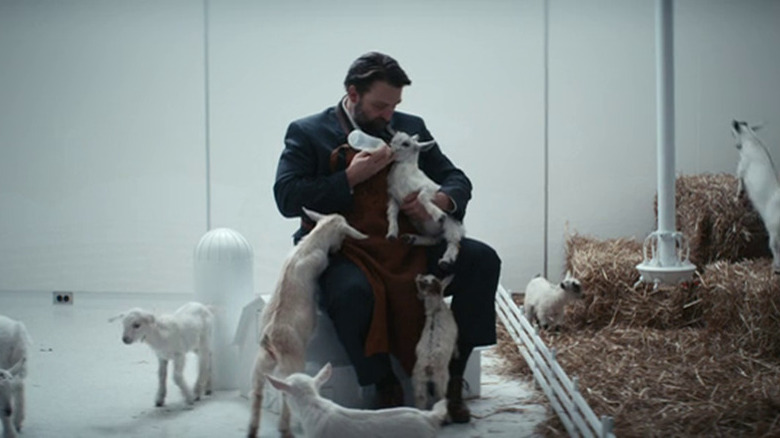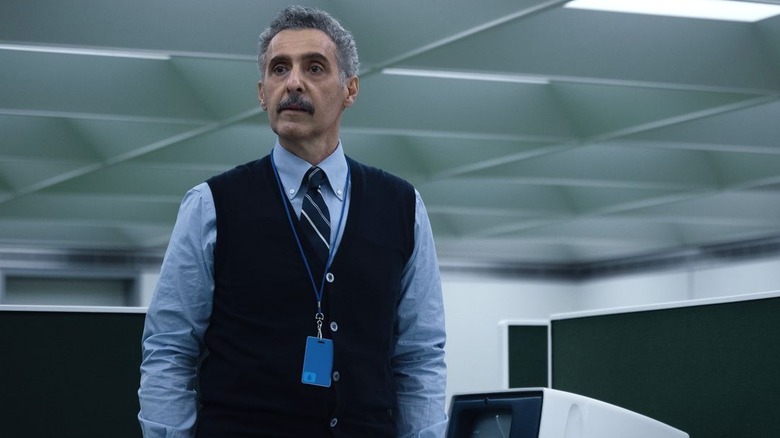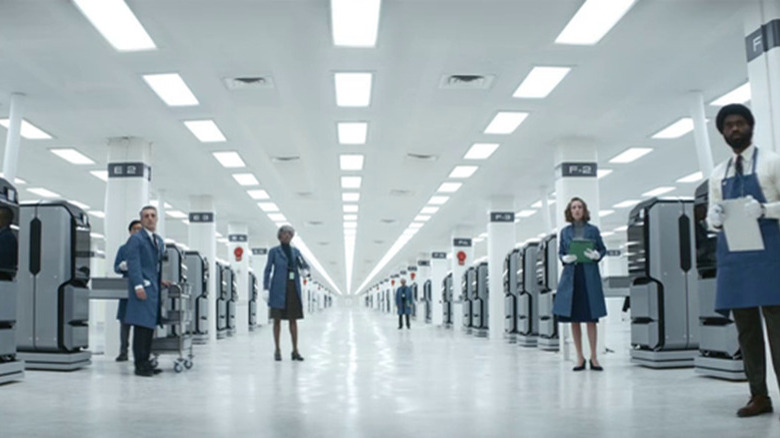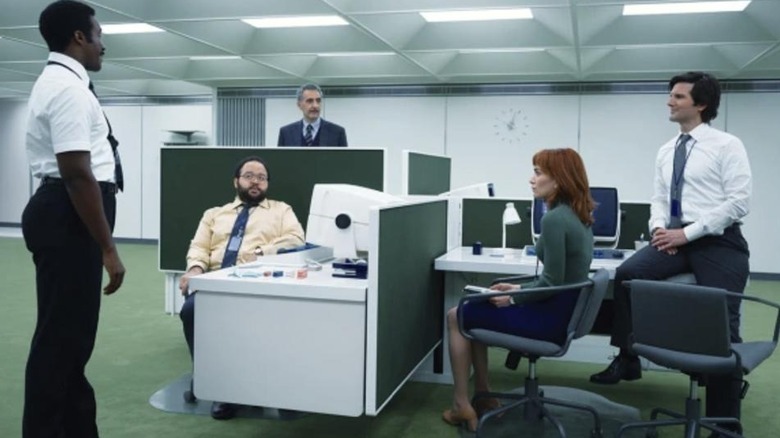Biggest Unanswered Questions From Severance Season 1
Apple TV's new sci-fi mystery "Severance" is as gripping and thought-provoking as Damon Lindelof's hit shows "Lost" and "The Leftovers." It's not a coincidence that both viewers and critics have pointed out similarities to those series. Dan Erickson's drama begins slowly, carefully building a world to take advantage of its own potential, with a tremendous chance to expand and become a long-running program.
"Severance" introduces us to a small group of office workers whose memories have been surgically divided — "severed," to be precise — between their work and personal lives. No film or television program takes the term "work-life balance" more literally. In this world, two minds and two personalities can coexist in one body without being aware of what the other does. This concept is the ideal groundwork for creating mystery, and "Severance" uses that ambiguity smartly to explore characters, hint at conspiracies, and tell a complex story that holds plenty of twists and turns.
Erickson poses more questions than he answers, which forces viewers to speculate on where all this lunacy is headed. However, there's a strong sense suggesting that the creator has a solid plan and knows exactly what he's doing.
Regardless, there are some burning questions that Season 1 doesn't answer. Here, we gathered the most intriguing ones, and shall contemplate what the answers could be.
(Warning: Spoilers ahead.)
Is Harmony Cobel a villain or not?
Harmony Cobel (Patricia Arquette in a dubious role) is Mark's (Adam Scott) boss at Lumon Industries. She oversees departments and employees within the company. However, her attention is focused on one area in particular — the Macrodata Refinement (MDR) department. Although she is highly ranked, Cobel must follow and execute direct orders coming from the enigmatic group referred to as "The Board."
As we learn early on, Cobel is also a part of Mark's personal life. He knows her as Mrs. Selvig, a nosy next-door neighbor who constantly bothers him with trivialities. Obviously, she's monitoring Mark's persona and identity outside of Lumon, or his "outie," intruding on his life any way she can to stay close to him. However, the series never tells us what her real intentions are or why she's so interested in Mark.
Does Cobel spy on Mark because she was ordered to, or is her interest personal? We're never exactly sure. She doesn't just watch him through monitors at work; she inserts herself into his outie life by becoming a nanny for his sister's newborn. Evidently, Cobel feels some sympathy for the chronically depressed Mark. But the question is, now that Lumon has fired her, will she change sides and help Mark uncover what the company is up to? Or will she stay loyal to the Eagan family?
Based on what happens in the season finale, the latter seems more likely.
What kind of person is Irving's outie?
Apart from Mark, we don't learn much about the personal lives of the four coworkers at Lumon MDR. The first time we see Irving (John Turturro) outside of Lumon, his outie is reading on a bench in the freezing cold with a dog at his feet. When he gets home, no one welcomes him. Seemingly, he lives a quiet and lonely life. But as we learn from the finale, he's plotting against Lumon, so perhaps there's a reason for that solitary lifestyle.
In the first half of the series, the work version of Irving (or his "innie") comes across as a disciplined, slightly awkward man who strictly follows the rules. He has an obsession with the company's shadowy founder, Kier Eagan (Marc Geller). Sometimes, Irving can be an annoying suck-up. But given what we see in Season 1's final episode, Irving's outie might be quite the opposite. There's a possibility that he's an absolute rebel, looking for ways to expose and ruin the company he works for.
Season 1 does an excellent job of implying all these little details about Turturro's character, who undergoes a truly transformative nine episodes.
What really happened to Burt?
Burt (a graceful Christopher Walken) is chief of Optics and Design (O&D) at Lumon Industries. In Episode 7, we learn that — according to his outie — he has worked for the company for seven years, and now he's retiring. It's a rather sad moment for two specific reasons — his romance with Irving will come to an end, and we have a bitter sense that "retirement" at Lumon doesn't mean the same thing it means everywhere else. The memories that Burt has lived in those years will disappear — his innie is going to die, just like that.
But what is the process behind Lumon's "retirement?" Will Burt ever be able to access his O&D-related memories? There's no guarantee that the company won't use him or exploit his innie's recollection in the future. And if they do, he probably won't know about it, will he?
Hopefully, we'll have a chance to learn more about Burt in Season 2, and find out what happens to individuals who retire at Lumon.
Is Dylan's outie happily married?
In Episode 6, Dylan's (Zach Cherry) innie gets to glimpse his outie's life for a few seconds. Milchick (Tramell Tillman) "wakes" him at his home to ask where he hid the ideographic card he stole from O&D. During this moment of consciousness in the exterior world, Dylan's innie encounters his outie's son.
In the following episode, he can't stop asking Milchick about what happened. Milchick explains that what Dylan experienced is called the Overtime Contingency protocol.
"It's a safeguard we occasionally employ to remotely awaken workers off-site," says Milchick. "It's for emergency use only."
The fact that Lumon can do such a procedure raises some ethical questions, for sure. But let's go back for a second. This plot point tells us that Dylan has a son — and, as we later find out, he might have two more — which means he could be married. He could have a completely happy life that his innie knows nothing about. But if that's the case, why would he apply for severance?
It's also possible that Dylan is divorced, or lost his spouse like Mark did. Either way, this detail adds another layer to his character and the secrets surrounding Lumon.
Is Ms. Casey a real person?
One of the most mesmerizing riddles of the whole series so far surrounds Ms. Casey (Dichen Lachman). At first, Ms. Casey is introduced to us as the Lumon wellness counselor for the severed floor. But the end of Episode 7 reveals a twist — she is, or appears to be, Mark's supposedly deceased wife.
In Episode 8, Mark is scheduled for one last session with Ms. Casey, and she tells him that she'll soon be replaced with a new wellness director. During the conversation, she says her life has only been 107 hours long.
The character's demeanor throughout the season is quite firm and robotic. She follows and executes orders without any apparent real emotions. All the details and information we have about her, or the lack thereof, might make us wonder if the company is using her for some kind of experiment. Is it possible that she might not be entirely human? She acts and speaks like an android, and seems to lack basic social skills.
As Ms. Casey spends more time with Mark towards the end of her Lumon tenure, it almost seems as if she is just starting to discover genuine feelings and her authentic personality. The fact that Lumon closely monitors the interactions between the two — especially whether they remember each other — tells us that something here isn't right.
What's going to happen to Helly now?
The final episode of Season 1 includes one of the wildest twists of the show thus far. As it turns out, Helly's (Britt Lower) full name and outie identity is Helena Eagan — daughter of Lumon founder, Kier Eagan. Incidentally, Kier appears entirely alive, contrary to what we've been told.
It seems that while Helly's innie hates Lumon with a raging passion, her outie is an influential, high-ranking, and financially invested member of the organization.
Helena is about to give a speech to a room full of people about her "inspirational" experience as one of the severed workers at Lumon. What the crowd doesn't suspect is — thanks to the Overtime Contingency protocol, hijacked by Dylan – Helena's innie is in control.
Although Cobel arrives just in time to warn Helly about the repercussions she and her friends will face, she still decides to unveil the truth. Helly's innie tells the crowd that everything about severance is a lie, and that severed workers are tortured prisoners. This move will obviously result in some sort of punishment later on.
There's a chance that Helly will never come back to MDR. From the company's perspective, letting her back would be irresponsible and dangerous. But in that case, what's going to happen to her? Can Helena's innie stay alive? Well, that's one of the most pressing questions we have to wait to be answered next season.
Why does Mark think his wife is dead?
One of the ongoing storylines in Season 1 of "Severance" is Mark's inability to move on from his wife's passing. Little does he know that he meets the woman he's grieving every other day at work — or, at least his innie does.
During Mark and Ms. Casey's last wellness session, Cobel and Milchick monitor their conversation. The latter says to his boss that it's good that they don't remember each other. "It means the chips work," he claims. Unconvinced, Cobel orders him to take Ms. Casey (or should we be calling her "Gemma?") back down to the testing floor.
Lumon is obviously doing something immoral and probably illegal by using Mark and a woman who seems to be his wife to run some kind of experiment. Lumon might have made up a lie about Mark's wife's death, altered the couple's memories with chips, and are monitoring the results. But why not choose a different subject who has actually suffered some sort of similar trauma? Wouldn't that make a better specimen?
It feels way too risky for the company to take a chance and risk exposure like this. As we now know, Mark learns in the season finale that his wife isn't dead at all — or at least her body doesn't seem to be.
What do the ominous paintings represent?
In Episode 5, Irving finds some copies of a painting called "The Grim Barbarity of Optics and Design" before he heads over to the O&D department. "The Grim Barbarity..." is an animalistic, disturbing, and phantasmagorical piece of art that surely has some great significance. Milchick quickly tries to downplay the situation by telling Irving that this print job was sent by accident, but Irving suspects that the image portrays a coup that happened in O&D long ago — even though he has no idea if it's more than just a rumor.
When asked, Burt assures Irving that there is no painting by that name in his department. However, Dylan finds a very similar painting on one of the O&D shelves, and calls Burt out on it. Burt explains that it's a different piece titled "The Macrodata Refinement Calamity." The characters are just as baffled by all this as we are because — to their recollection — no massacres have ever taken place in either of their departments.
Could the pictures mean that, at one point, there was a riot where the innies rebelled against Lumon and killed some of their superiors? If so, why would the company allow reminders of the event to be available all around the severed floor? We'll have to wait and see if Season 2 tells us more.
What are the baby goats for?
Hands down, the most bonkers moment of the series so far is the Waffle Party. The second weirdest thing in Lumon is a room full of baby goats. Yes, you read that right.
In Episode 5, Helly and Mark go on a mental health walk in the labyrinth-like corridors when they discover a room where a man is feeding baby goats. He tells the MDR workers, "You can't take them yet. They're not ready. It isn't time."
What on Earth is going on there, you ask? No one has any rational idea yet. There's no explanation whatsoever.
Helly suggests that the animals might be the numbers they do on their computers, and the MDR crew are obliviously deciding which ones live and which ones die. Mark has his doubts. But if Mark is correct, what else could the baby goats be for?
It could be that Lumon uses the goats to run clinical trials and other freaky experiments. Maybe Lumon is secretly engineering an army of supergoats to conquer the Earth and replace mankind as the planet's dominant species. Maybe Kier Eagan just thinks goats are neat, and he likes having a bunch of them around for fun.
Whatever the case, this is one of those mysteries in the series we don't have much info on yet.
Why does Irving hallucinate from time to time?
In Episode 9, we learn that Irving's outie is running an investigation of his own on Lumon. He has collected lists, news articles, names, and maps with marked locations connected to the company and its people. We know that he's been severed for longer than any other MDR worker, and experiences certain sensory episodes from time to time. In these hallucinations, he sees a dark liquid matter flowing from everywhere, as if it wants to attack or consume him. This could indicate that the severance procedure isn't perfect, and subjects can suffer from side effects — such as horrifying visions — as the chip dividing their brain malfunctions.
It could also explain why Irving's outie is determined to find more clues about what Lumon is doing to its employees. He might know more than we do, and his decision to undergo surgery was made to learn even more — to dig deeper from the inside. We're definitely eager to learn how much he knows and what evidence he has.
What does the O&D department do?
We meet Burt for the first time in Episode 2, where he introduces himself as the head of Optics & Design. Although he claims that the department only has two members, later on, we find out that's a lie.
In fact, O&D has many employees working like busy bees, but we have essentially no idea what they do. Burt says that they're responsible for making handbook totes and hanging paintings, but clearly, there's something bigger happening. When Mark and his team pay a visit to O&D, it becomes obvious that, as is the case for MDR, the workers do not understand the true nature of their work.
Burt says that everything they do at Lumon is important, and Irving backs him up immediately. But what exactly do they do at Lumon? They have no clue.
What if Lumon only tells its employees to do these assignments, just to see if they will? Maybe the work is totally pointless, and Lumon only wants to keep an eye on severed workers, just to see how they behave? Maybe Lumon wants to know if there are anomalies, or malfunctions, and whether the severed ever remember anything about their lives outside of the building.
At one point, Cobel says, "The surest way to tame a prisoner is to let him believe he's free." Given the revelations in the finale, it wouldn't be surprising if all these people are nothing but captives who they don't even know it.
What does the MDR department do?
The folks at O&D don't know what they do, and the case isn't much different for our protagonists at the MDR department. The closest they get to describing their job is when Mark trains Helly in Episode 2. In that scene, Mark explains that every file that comes from upstairs contains fully encoded data with numbers that fall into four essential categories. Each category of numbers is meant to elicit an emotional reaction in the refiner. Only after they experience an emotional reaction do they know how to group, separate, and evenly box each line of code.
Despite this apparently simple description, Mark and his coworkers often ask their superiors what they actually do there. There's never an exact answer — in fact, usually, there's no answer at all. Some fan theories suggest that Mark and his team aren't really doing anything — they are just given tasks to keep them busy while the Board monitors their behavior on a daily basis. However, the little insight we saw in the finale could indicate that the Eagan family is exploiting all of the severed people for their own benefit.
Either way, these possible explanations have the potential to expand in the future. Hopefully, Season 2 will reveal some essential information regarding the work being done at MDR and Lumon at large.
